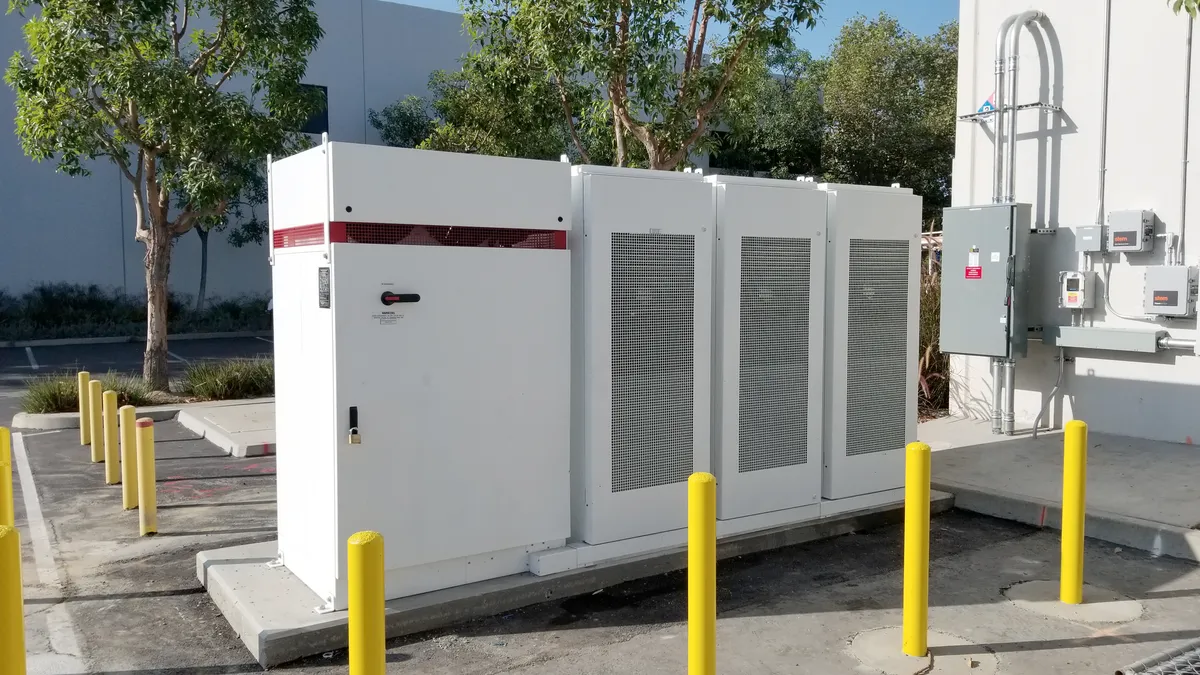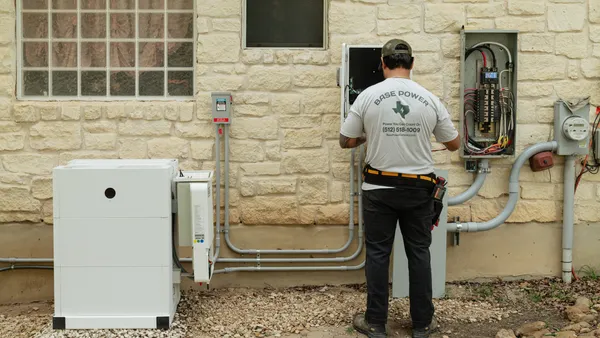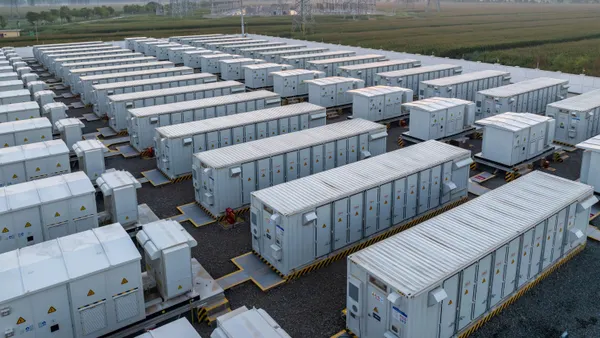Dive Brief:
- New energy storage installations rose across the U.S., with 1,170 MW/2,608 MWh installed in the second quarter of 2022 in spite of supply chain delays, according to an analysis by Wood Mackenzie and the American Clean Power Association released last week. That is the highest amount of new storage added in any second quarter to date.
- The residential storage sector saw the most growth, at a record 154 MW/375 MWh of battery capacity added. That is 31 MW more than was added in the second quarter of 2021, with credit given to the Inflation Reduction Act’s Investment Tax Credit.
- Despite the overall increase in storage deployments in Q2, commercial, industrial and community projects continue to fall short of projections. The shortage is due to supply chain constraints — from legal to labor — including the dispute at the federal level over imported solar panels from Asia and a limited energy storage workforce as demand is rising.
Dive Insight:
The U.S. saw an impressive increase in new energy storage capacity, thanks largely to Texas, which provided 60% of the 2.6 GWh-plus of new storage in the second quarter. But overall growth continues to be dragged down by supply constraints and other challenges, according to the latest U.S. Energy Storage Monitor report by Wood Mackenzie, and the American Clean Power Association, or ACP.
“More than 1.1 gigawatts of projects originally scheduled to come online in Q2 were delayed or canceled, although 61% of this capacity, 709 megawatts, is still scheduled to come online in Q3 and Q4 of 2022,” Vanessa Witte, senior research analyst with Wood Mackenzie’s energy storage team, said last week. “Supply chain issues, transportation delays and interconnection queue challenges were the main drivers behind delays in the commercial operations date for many projects,” Witte added.
But Texas saw a surge in new energy storage.
“Texas overtaking California this quarter [on storage additions] should serve as a reminder that generators, customers, and grid operators in all geographies are increasingly relying on energy storage,” said Jason Burwen, ACP vice president of energy storage.
Residential storage growth outpaced other sectors — commercial, industrial and community — although it too was slowed by supply shortages and rising prices, according to the storage report. However, solar installers are adding storage to their systems because of the federal Investment Tax Credit extension under the Inflation Reduction Act. The law’s ITC for standalone storage “will also boost storage retrofits on homes with existing solar,” WoodMac and ACP added.
But the ongoing controversy before the Department of Commerce over potential solar tariffs on Chinese parts alleged to have been used in panels from Southeast Asia — tariffs that have been temporarily waived by President Joe Biden — has caused “continued procurement hesitation,” the storage report noted.
Despite ongoing supply hurdles, Wood Mackenzie and ACP project the extended solar and new stand-alone storage ITCs will support 59.2 GW of energy storage capacity additions through 2026. According to ACP’s Burwen, “the question for investors and grid operators now is not whether to deploy storage, but how much storage to deploy – and how fast.
Correction: A previous version of this story had an incorrect total for the MWh of storage added in the U.S. in Q2. It is 2,608 MWh.














